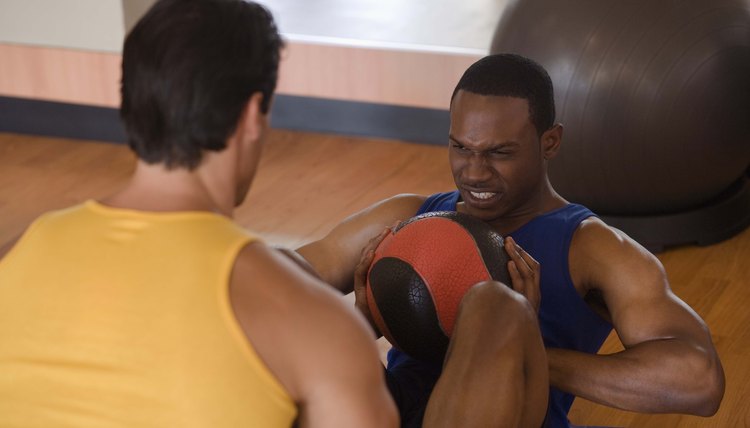Why Do They Call it a Medicine Ball?

You grab a heavy, rubberized ball off the storage rack at your local workout facility in preparation for your full-body routine. This portable fitness tool is not a new trend, or something to keep in the corner. Medicine balls made their debut thousands of years ago.
Sailors
One of the early uses of medicine balls was around 1,000 B.C. Persian soldiers used round bladders filled with sand as part of their resistance training. In the 19th century, before modern medicine balls were made of rubber or vinyl and filled with sand, basketballs were filled with rags. Navy doctors would tell sailors to throw the balls around the decks of the ships. The balls were used as a type of medicine prescribed to reduce boredom, avoid seasickness and improve the overall health of the enlisted men.
Hippocrates
Another possible origin of the term "medicine ball" lies with the Greek physician Hippocrates. Around 400 B.C., Hippocrates used sand-filled leather balls with his patients. Patients would throw the balls around to rehabilitate after illness or injury. Hippocrates also was said to recommend the medicine balls to improve or maintain health.
President
President Herbert Hoover brought the medicine ball to the attention of the rest of society in 1931 with his new sport called Hoover-Ball. Hoover's personal physician, a Dr. Boone, noticed the president's sedentary lifestyle and developed a medicine ball throwing game. The president and members of his team would throw the sand-filled ball over a net similar to one used during volleyball games.
Health
Medicine balls are still used to improve health. The balls are easy to hold, making them a potential part of any workout. Medicine balls are available in various weights from 2 to 35 pounds so you can use one as part of your progressive strengthening routine. Some balls bounce and others do not, giving you options for different exercises.
References
Writer Bio
A mother of two and passionate fitness presenter, Lisa M. Wolfe had her first fitness article published in 2001. She is the author of six fitness books and holds an Associate of Arts in exercise science from Oakland Community College. When not writing, Wolfe is hula-hooping, kayaking, walking or cycling.
